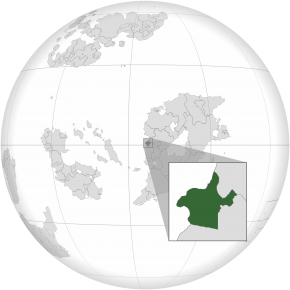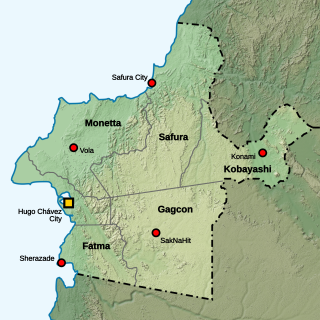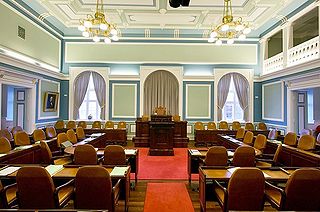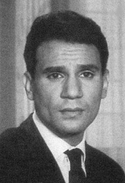Lettuce: Difference between revisions
Juan Lechuga (talk | contribs) No edit summary |
Juan Lechuga (talk | contribs) No edit summary |
||
| (154 intermediate revisions by 3 users not shown) | |||
| Line 1: | Line 1: | ||
{{Infobox country | {{Infobox country | ||
|native_name = | |native_name = <small>''Ir-Repubblika Bolivəriana tal-Ħass'' ([[Lettucian language|Lettucian]])</small> | ||
|conventional_long_name = Bolivarian Republic of Lettuce | |||
|common_name = Lettuce | |common_name = Lettuce | ||
|image_flag = Flag of Lettuce.png | |image_flag = Flag of Lettuce.png | ||
|image_coat = | |image_coat = New Lettuce Seal.png | ||
|symbol_type = Seal | |symbol_type = Seal | ||
|national_motto = | |national_motto = ''Patria, sokəliżmu o mewt''<br><small>''Motherland, Socialism or Death''</small> | ||
|national_anthem = | |national_anthem = ''tal-Ħassi tarr tal-gloriə!''<br><small>''Lettuce: Land of Glory!''</small> | ||
|image_map = | |image_map = Lettuce location.png | ||
|map_width = 290px | |||
|map_caption = | |map_caption = | ||
|capital = Hugo Chávez City | |capital = {{nowrap|[[Hugo Chávez City]]}} | ||
|largest_city = Hugo Chávez City | |largest_city = {{nowrap|[[Hugo Chávez City]]}} | ||
|official_languages = | |official_languages = [[Lettucian language|Lettucian]] | ||
| | |regional_languages = [[Wikipedia:Arabic language|Arabic]]<br>[[Gandhari language|Gandhari]]<br>[[Wikipedia:Japanese language|Japanese]]<br>[[Wikipedia:Korean language|Korean]]<br>[[Wikipedia:Italian language|Italian]]<br>[[Wikipedia:Spanish language|Spanish]]<br>[[Wikipedia:Turkish language|Turkish]] | ||
|demonym = Lettucian | |demonym = Lettucian | ||
|government_type = [[Wikipedia: | |government_type = [[Wikipedia:Socialist state|Socialist parliamentary republic]] | ||
|leader_title1 = President | |leader_title1 = President | ||
|leader_name1 = | |leader_name1 = [[Wikipedia:JO1|Kawashiri Ren]] | ||
|leader_title2 = Prime Minister | |leader_title2 = Prime Minister | ||
|leader_name2 = | |leader_name2 = [[Wikipedia:JO1|Yonashiro Sho]] | ||
|sovereignty_type | | sovereignty_type = [[Wikipedia:Independence|Independence]] | ||
|established_event1 = | | sovereignty_note = from [[Gandhara]] | ||
|established_date1 = | |established_event1 = Lettucian Independence Act | ||
|established_event2 = | |established_date1 = 15 August 1957 | ||
|established_date2 = | |established_event2 = [[Treaty of Vola]] | ||
|established_event3 = | |established_date2 = 14 May 1958 | ||
|established_date3 = | |established_event3 = Declaration of Bolivarian Republic | ||
|established_date3 = 1 January 2010 | |||
|established_event4 = | |established_event4 = | ||
|established_date4 = | |established_date4 = | ||
|established_event9 = | |established_event9 = | ||
|established_date9 = | |established_date9 = | ||
|area = | |area_rank = | ||
|area_km2 = <!-- | |area_magnitude = | ||
| | |area = | ||
|area_km2 = 41885 | |||
|area_sq_mi = | |||
|area_footnote = | |||
|percent_water = | |||
|area_label = Total | |||
|area_label2 = <!-- label below area_label (optional) --> | |||
|area_data2 = <!-- text after area_label2 (optional) --> | |||
|population_estimate = | |population_estimate = | ||
|population_estimate_rank = | |population_estimate_rank = | ||
|population_estimate_year = | |population_estimate_year = | ||
|population_census = | |population_census = 6,307,486 | ||
|population_census_year = | |population_census_year = 2019 | ||
|population_density_km2 = | |population_density_km2 = 150.6 | ||
|population_density_sq_mi = | |population_density_sq_mi = | ||
|GDP_PPP = | |GDP_PPP = | ||
| Line 47: | Line 56: | ||
|GDP_nominal = | |GDP_nominal = | ||
|GDP_nominal_year = | |GDP_nominal_year = | ||
| | |GDP_nominal_pester_capita = | ||
|Gini = | |Gini = | ||
|Gini_year = | |Gini_year = | ||
| Line 66: | Line 75: | ||
|calling_code = 63 | |calling_code = 63 | ||
|}} | |}} | ||
'''Lettuce''', officially the '''Bolivarian Republic of Lettuce''' ([[Lettucian language|Lettucian]]: ''Ir-Repubblika Bolivəriana tal-Ħass''), is a [[Wikipedia:Socialist state|socialist state]] in [[Outernatia]]. It is bordered to the west by the [[Wikipedia:Sea|Artemitic Sea]]; to the north and northeast by [[Gandhara]]; and to the south and southeast by [[Raingate]]. Lettuce has a population of around 6.3 million people and its territory covers 41,885 km² (16,172 sq mi) being the [[Outernatia#Political geography|second-most densely populated]] country in Outernatia. Its [[Wikipedia:Capital city|capital]] and largest city is [[Hugo Chávez City]]. | |||
A place of confluence for diverse communities, Lettuce is characterized by [[Wikipedia:Multiculturalism|multiculturalism]], as well as a strong [[Wikipedia:National identity|national identity]] over the interests of the different populations living in the region. Lettuce has been influenced by [[Wikipedia:Italian diaspora|Italian]], [[Wikipedia:Turkish_diaspora|Turkish]], [[Wikipedia:Spanish diaspora|Spanish]], [[Wikipedia:Arab diaspora|Arab]] and [[Gandhara|Gandhari]] communities over the years, making it a tolerant and heterogeneous society. Lettuce holds close cultural, political, and economic ties with Gandhara, with whom it shares a large part of its history. | |||
The Bolivarian Republic of Lettuce was established after the Bolivarian Revolution, which led to the establishment of a Socialist state on 25 August 2014. The country is governed as a [[Wikipedia:Parliamentary republic|Socialist parliamentary republic]] since the adoption of the 2012 Constitution. The President is [[Wikipedia:JO1|Kawashiri Ren]] and the [[Wikipedia:Prime Minister|Prime Minister]] is [[Wikipedia:JO1|Yonashiro Sho]] since 2023. Lettuce is a founding member of the [[Outernatian Union]] and a member of the [[Union of Sovereign States]]. | |||
== History == | |||
{{multiple image | |||
| footer = The signatories of [[Treaty of Vola]], Ahmed Assiri (left) and Carlos Ibáñez del Campo (right). | |||
| align = left | |||
| width = 125 | |||
| image1 = Assiri.png | |||
| alt1 = 125px | |||
| image2 = DelCampo.png | |||
| alt2 = 125px | |||
}} | |||
The [[Gandhari Revolution|Lettucian governorate]] has separated from [[Gandhara]] through the Lettucian Independence Act, signed on 15 August 1957 in response to the [[Gandhari Revolution]]. The population, mostly [[Wikipedia:Christianity|Christian]], feared the loss of several privileges that were granted under the [[Al-Mansur dynasty]]. | |||
After a couple of months of negotiations, the new Gandhari Goverment and the Goverment of the [[First Lettucian Republic]] agreed on the terms under which Lettuce would become independent, while Gandhara would keep access to the sea. The conclusions of the negotiations were listed in the [[Treaty of Vola]] signed on 14 May 1958 by the President of Gandhara, Ahmed Assiri, and the Prime Minister of Lettuce, [[Wikipedia:Carlos Ibáñez del Campo|Carlos Ibáñez del Campo]].<br><br><br><br> | |||
=== Bolivarian Republic of Lettuce === | |||
[[File:Hugo Chavez.jpg|thumb|220px|left|[[Wikipedia:Hugo Chávez|Hugo Chávez]], former president and founder of the Bolivarian Republic of Lettuce.]] | |||
On 6 October 2009, the general, legislative and presidential elections were held, which were characterized by a major defeat of the traditional political parties who as a whole lost more than 50% of the seats available in the House of Representatives. | |||
The winning party was the nascent [[United Socialist Party of Lettuce]] ([[Lettucian language|Lettucian]]: ''Partit Sokəliżta Unit tal-Ħass''), that obtained 60.5% of the votes, gaining an absolute majority in the House of Representatives with 13 of the 20 available seats. In addition, its presidential candidate, ex-[[Wikipedia:Colonel|colonel]] [[Wikipedia:Hugo Chávez|Hugo Chávez Frías]], obtained 65.6% of the votes. | |||
The new legislature was constituted on 1 January 2010. The first actions were the addition of the word "Bolivariana" to the official name of the Republic and the call for a [[Wikipedia:Constituent assembly|Constituent Assembly]] to reform the Constitution that ruled the country since 1980. For this purpose, the dissolution of the House of Representatives was arranged 3 months after being chosen and new elections were being held in September 2010 for a new National Assembly of 30 seats.<br><br> | |||
== Administrative divisions == | |||
Lettuce is administratively divided into 6 [[Wikipedia:State (polity)|states]], which have a large degree of [[Wikipedia:Autonomous administrative division|autonomy]] from the nation's capital. This division also reflects the different ethnicities and nationalities living the the territory: Gandharis, Japanese, Korean, Turkish, Spanish, Sanmarinese and Lettucians. These states in turn have their own subdivisions. | |||
{| class="wikitable sortable" | |||
|- | |||
| rowspan="14" align="center" | [[File:States of Lettuce.png|320px]] | |||
|- | |||
! Flag | |||
! [[Wikipedia:State|State <small>''(Stat)''</small>]] | |||
! Capital | |||
! Population (hab) | |||
! Area (km<sup>2</sup>) | |||
|- | |||
|[[File:Flag of Hugo Chavez State.png|70px]] | |||
| Hugo Chávez | |||
|[[Hugo Chávez City]] | |||
|align=right| 1,545,687 | |||
|align=right| 4,473.83 | |||
|- | |||
|[[File:Flag of Monetta.png|70px]] | |||
| [[Monetta]] | |||
| Vola | |||
|align=right| 892,335 | |||
|align=right| 7,874.38 | |||
|- | |||
|[[File:Flag of Safura.png|70px]] | |||
| Safura | |||
| [[Wikipedia:Safura Alizadeh|Safura City]] | |||
|align=right| 909,016 | |||
|align=right| 9,626.53 | |||
|- | |||
|[[File:Flag of Gagcon.png|70px]] | |||
| [[Gagcon]] | |||
| [[Wikipedia:Sakura Miyawaki|Sak]][[Wikipedia:Nako Yabuki|Na]][[Wikipedia:Hitomi Honda|Hit]] | |||
|align=right| 1,002,544 | |||
|align=right| 8,051.34 | |||
|- | |||
|[[File:Flag of Kobayashi.png|70px]] | |||
| [[Kobayashi]] | |||
| [[Wikipedia:Konami|Konami]] | |||
|align=right| 1,377,997 | |||
|align=right| 8,152.91 | |||
|- | |||
|[[File:Flag of Fatma.png|70px]] | |||
| [[Fatma]] | |||
| Sherazade | |||
|align=right| 579,907 | |||
|align=right| 4,733.01 | |||
|- | |||
|} | |||
== Politics == | |||
===Political system=== | |||
[[File:YonashiroSho.png|thumb|220px|right|[[Wikipedia:JO1 (japanese band)|Yonashiro Sho]], prime minister of Lettuce.]] | |||
{{about||the most recent election|Lettuce general election 2023}} | |||
Legislative branch is vested in [[National Assembly of Lettuce|Lettucian National Assembly]] ([[Lettucian language|Lettucian]]: ''Assemblea Nazzjonali'') which consists of 45 members. Majority approval from Assembly is needed to pass legislation. | |||
Following an election reform in 2019, members of the National Assembly are elected every 5 years and grew in size to 45 members from the previous 30. The seats are elected directly through the proportional representation system whereby each state elects a set number of members to represent them in the Assembly. The number of members representing a state is determined by the population within that state. For example, the most populous state of Hugo Chávez has 11 members in the Assembly, while the least populous state of Fatma has 4 representatives. | |||
Following the most recent [[Lettuce general election 2023|general election]] in July 2023, the current prime minister is Yonashiro Sho of the [[Lettucian Asian Front]]. | |||
[[File:Lettucian National Assembly.jpg|thumb|320px|right|The Lettucian National Assembly.]] | |||
{| class="wikitable" | |||
! colspan=4| Lettucian National Assembly | |||
|- | |||
! rowspan="11" style="background-color:white"| [[File:LNA20232025.svg|300px]] | |||
|- | |||
! colspan=2| Party Name | |||
!Seats | |||
|- | |||
|style="background-color:#F01990" width=2 | || [[Lettucian Asian Front]] || 15 | |||
|- | |||
|style="background-color:red" width=2 | || [[United Socialist Party of Lettuce]] || 11 | |||
|- | |||
|style="background-color:#0c81a5" width=2 | || [[Liberty, Justice and Development]] || 10 | |||
|- | |||
|style="background-color:#1ba100" width=2 | || Pan-Arabic Party of Lettuce || 6 | |||
|- | |||
|style="background-color:#8c0000" width=2 | || [[Communist Party of Lettuce]] || 3 | |||
|- | |||
!colspan=2| Total seats !! '''45''' | |||
|} | |||
{{Countries of Outernatia|state=collapsed}} | |||
[[Category:Country]] | |||
[[Category:Lettuce]] | |||
Latest revision as of 04:13, 12 July 2023
| Bolivarian Republic of Lettuce Ir-Repubblika Bolivəriana tal-Ħass (Lettucian) | |
|---|---|
Motto: Patria, sokəliżmu o mewt Motherland, Socialism or Death | |
Anthem: tal-Ħassi tarr tal-gloriə! Lettuce: Land of Glory! | |
 | |
| Capital and largest city | Hugo Chávez City |
| Official languages | Lettucian |
| Recognised regional languages | Arabic Gandhari Japanese Korean Italian Spanish Turkish |
| Demonym | Lettucian |
| Government | Socialist parliamentary republic |
• President | Kawashiri Ren |
• Prime Minister | Yonashiro Sho |
| Independence from Gandhara | |
• Lettucian Independence Act | 15 August 1957 |
| 14 May 1958 | |
• Declaration of Bolivarian Republic | 1 January 2010 |
| Area | |
• Total | 41,885 km2 (16,172 sq mi) |
| Population | |
• 2019 census | 6,307,486 |
• Density | 150.6/km2 (390.1/sq mi) |
| Currency | Lettucian Peso (PLT) |
| Date format | DD/MM/YYYY |
| Drives on the | right |
| Calling code | 63 |
| Internet TLD | .lc |
Lettuce, officially the Bolivarian Republic of Lettuce (Lettucian: Ir-Repubblika Bolivəriana tal-Ħass), is a socialist state in Outernatia. It is bordered to the west by the Artemitic Sea; to the north and northeast by Gandhara; and to the south and southeast by Raingate. Lettuce has a population of around 6.3 million people and its territory covers 41,885 km² (16,172 sq mi) being the second-most densely populated country in Outernatia. Its capital and largest city is Hugo Chávez City.
A place of confluence for diverse communities, Lettuce is characterized by multiculturalism, as well as a strong national identity over the interests of the different populations living in the region. Lettuce has been influenced by Italian, Turkish, Spanish, Arab and Gandhari communities over the years, making it a tolerant and heterogeneous society. Lettuce holds close cultural, political, and economic ties with Gandhara, with whom it shares a large part of its history.
The Bolivarian Republic of Lettuce was established after the Bolivarian Revolution, which led to the establishment of a Socialist state on 25 August 2014. The country is governed as a Socialist parliamentary republic since the adoption of the 2012 Constitution. The President is Kawashiri Ren and the Prime Minister is Yonashiro Sho since 2023. Lettuce is a founding member of the Outernatian Union and a member of the Union of Sovereign States.
History
The Lettucian governorate has separated from Gandhara through the Lettucian Independence Act, signed on 15 August 1957 in response to the Gandhari Revolution. The population, mostly Christian, feared the loss of several privileges that were granted under the Al-Mansur dynasty.
After a couple of months of negotiations, the new Gandhari Goverment and the Goverment of the First Lettucian Republic agreed on the terms under which Lettuce would become independent, while Gandhara would keep access to the sea. The conclusions of the negotiations were listed in the Treaty of Vola signed on 14 May 1958 by the President of Gandhara, Ahmed Assiri, and the Prime Minister of Lettuce, Carlos Ibáñez del Campo.
Bolivarian Republic of Lettuce

On 6 October 2009, the general, legislative and presidential elections were held, which were characterized by a major defeat of the traditional political parties who as a whole lost more than 50% of the seats available in the House of Representatives.
The winning party was the nascent United Socialist Party of Lettuce (Lettucian: Partit Sokəliżta Unit tal-Ħass), that obtained 60.5% of the votes, gaining an absolute majority in the House of Representatives with 13 of the 20 available seats. In addition, its presidential candidate, ex-colonel Hugo Chávez Frías, obtained 65.6% of the votes.
The new legislature was constituted on 1 January 2010. The first actions were the addition of the word "Bolivariana" to the official name of the Republic and the call for a Constituent Assembly to reform the Constitution that ruled the country since 1980. For this purpose, the dissolution of the House of Representatives was arranged 3 months after being chosen and new elections were being held in September 2010 for a new National Assembly of 30 seats.
Administrative divisions
Lettuce is administratively divided into 6 states, which have a large degree of autonomy from the nation's capital. This division also reflects the different ethnicities and nationalities living the the territory: Gandharis, Japanese, Korean, Turkish, Spanish, Sanmarinese and Lettucians. These states in turn have their own subdivisions.

| ||||
| Flag | State (Stat) | Capital | Population (hab) | Area (km2) |
|---|---|---|---|---|
| Hugo Chávez | Hugo Chávez City | 1,545,687 | 4,473.83 | |
| Monetta | Vola | 892,335 | 7,874.38 | |
| Safura | Safura City | 909,016 | 9,626.53 | |
| Gagcon | SakNaHit | 1,002,544 | 8,051.34 | |
| Kobayashi | Konami | 1,377,997 | 8,152.91 | |
| Fatma | Sherazade | 579,907 | 4,733.01 |
Politics
Political system

Legislative branch is vested in Lettucian National Assembly (Lettucian: Assemblea Nazzjonali) which consists of 45 members. Majority approval from Assembly is needed to pass legislation.
Following an election reform in 2019, members of the National Assembly are elected every 5 years and grew in size to 45 members from the previous 30. The seats are elected directly through the proportional representation system whereby each state elects a set number of members to represent them in the Assembly. The number of members representing a state is determined by the population within that state. For example, the most populous state of Hugo Chávez has 11 members in the Assembly, while the least populous state of Fatma has 4 representatives.
Following the most recent general election in July 2023, the current prime minister is Yonashiro Sho of the Lettucian Asian Front.

| Lettucian National Assembly | |||
|---|---|---|---|

| |||
| Party Name | Seats | ||
| Lettucian Asian Front | 15 | ||
| United Socialist Party of Lettuce | 11 | ||
| Liberty, Justice and Development | 10 | ||
| Pan-Arabic Party of Lettuce | 6 | ||
| Communist Party of Lettuce | 3 | ||
| Total seats | 45 | ||



